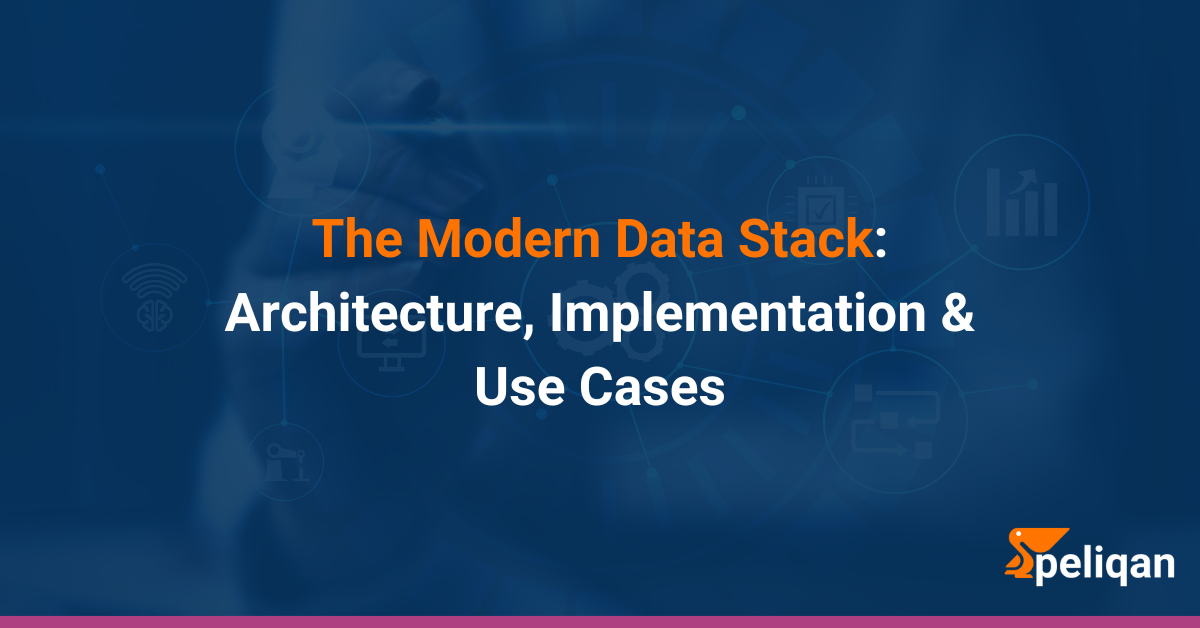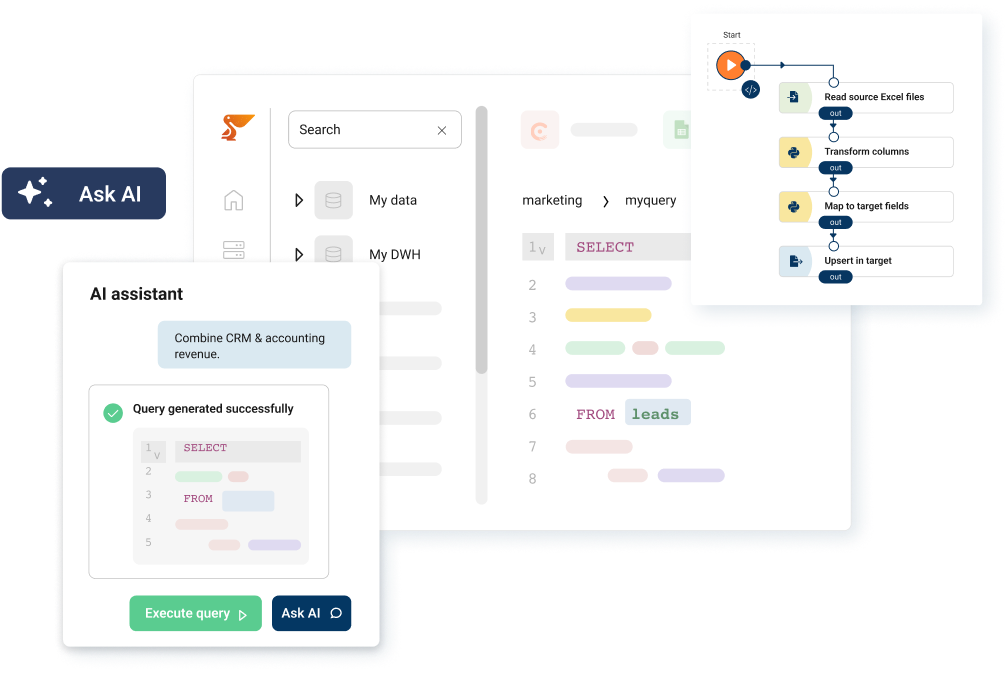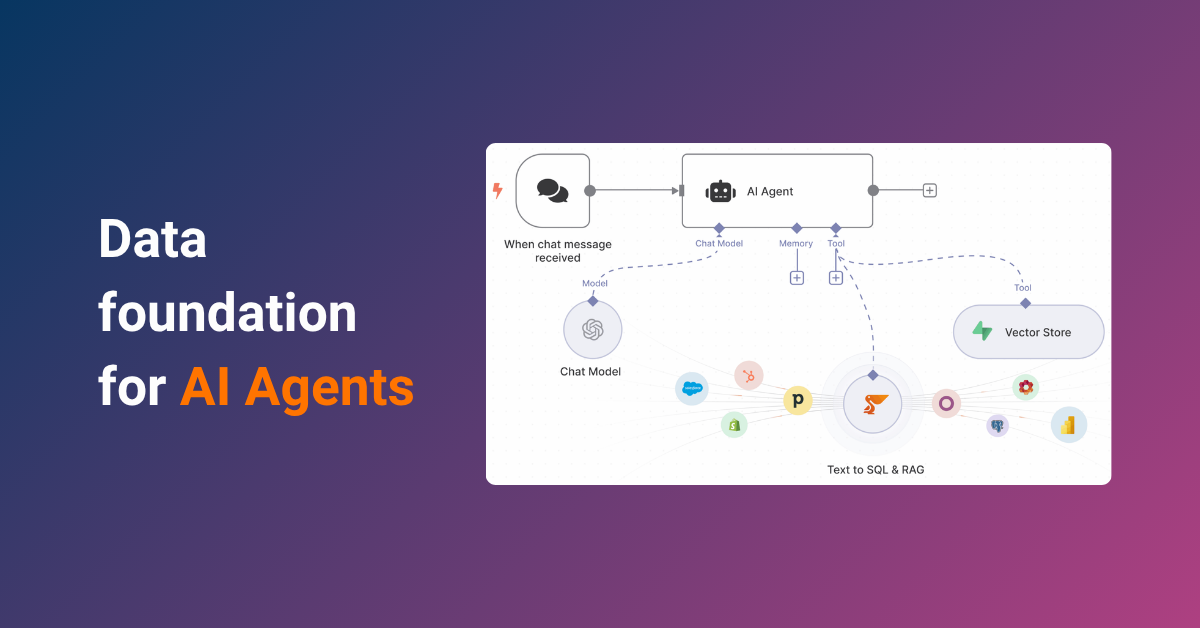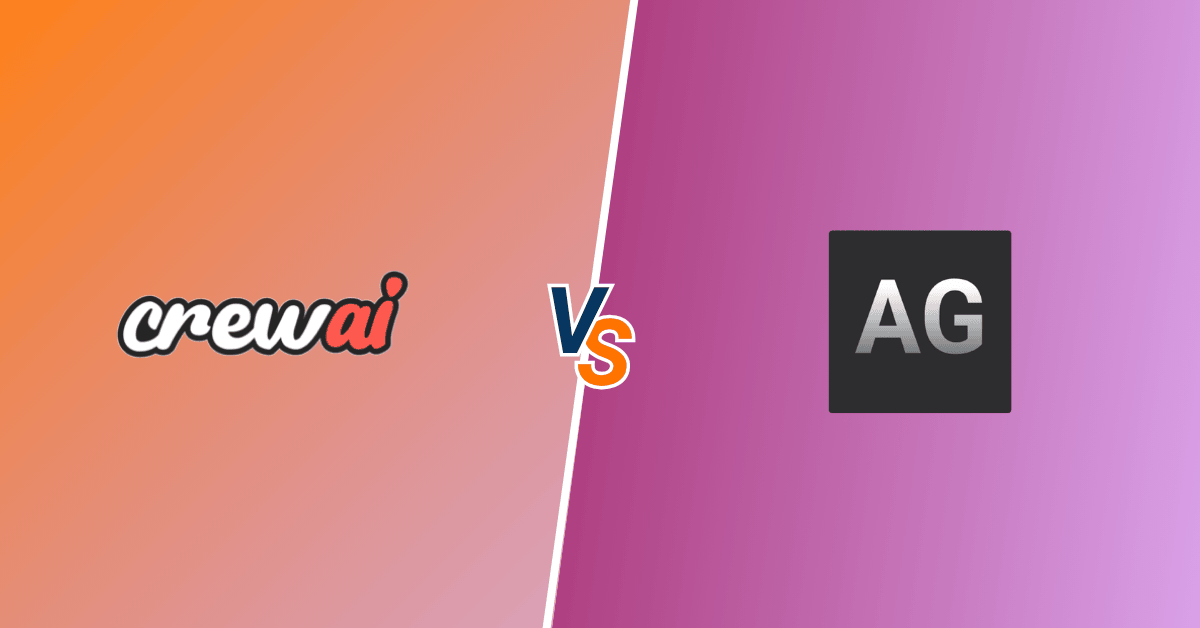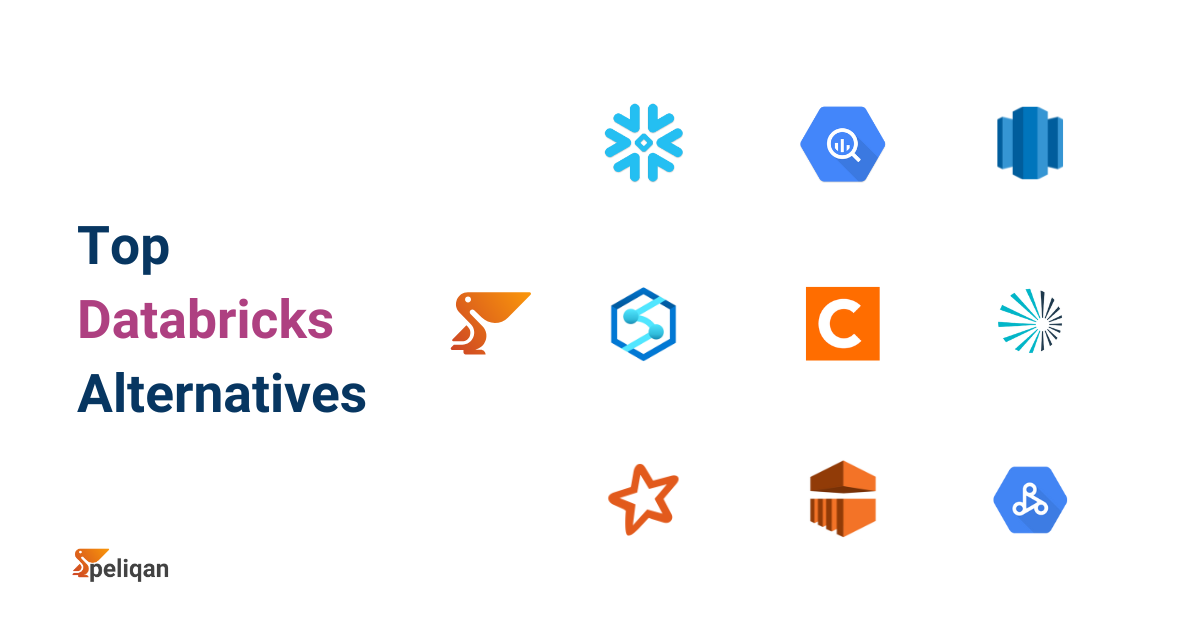In today’s digital landscape, data has become the lifeblood of businesses across industries. The ability to collect, process, analyze, and derive insights from vast amounts of data is crucial for making informed decisions, optimizing operations, and gaining a competitive edge. To meet these challenges, organizations are increasingly turning to the modern data stack – a collection of cutting-edge tools and technologies designed to handle the complexities of contemporary data management and analytics.
In this comprehensive guide, we’ll explore what the modern data stack is, how it differs from traditional approaches, its key components, and how businesses can leverage it to drive innovation and growth. We’ll also introduce Peliqan, an all-in-one platform that simplifies the implementation of a modern data stack for businesses of all sizes.
What is the Modern Data Stack?
The modern data stack refers to a suite of cloud-native tools and technologies used to collect, store, process, and analyze data in a scalable, efficient, and cost-effective manner. It represents a significant evolution from traditional on-premises data architectures, offering greater flexibility, scalability, and accessibility.
At its core, the modern data stack aims to address the challenges posed by the ever-increasing volume, variety, and velocity of data that organizations must handle. It enables businesses to:
- Centralize data from multiple sources
- Process and transform data efficiently
- Perform advanced analytics and machine learning
- Democratize data access across the organization
- Ensure data quality, security, and governance
Traditional Vs Modern Data Stacks
In order to fully understand the advantages offered by the modern data stack, it is essential to compare it with traditional data architectures and highlight the limitations that many organizations face when relying on outdated methods.
| Aspect | Traditional Data Stacks | Modern Data Stacks |
|---|---|---|
| Infrastructure | On-premises hardware | Cloud-native, serverless |
| Scalability | Limited, hardware-dependent | Highly scalable, elastic |
| Data Processing | Batch processing | Real-time and batch processing |
| Data Integration | ETL (Extract, Transform, Load) | ELT (Extract, Load, Transform) |
| Data Storage | Relational databases, data warehouses | Cloud data warehouses, data lakes |
| Data Types | Primarily structured data | Structured, semi-structured, and unstructured data |
| Analytics Capabilities | Descriptive analytics | Descriptive, predictive, and prescriptive analytics |
| Accessibility | Limited to technical users | Self-service for business users |
| Deployment Time | Weeks to months | Hours to days |
| Cost Model | High upfront costs, CAPEX | Pay-as-you-go, OPEX |
| Flexibility | Rigid, difficult to change | Modular, easy to update or replace components |
| Machine Learning Integration | Limited, often separate systems | Integrated ML and AI capabilities |
| Data Governance | Manual processes | Automated data quality and governance tools |
| Security | Perimeter-based security | Zero-trust, fine-grained access controls |
| Collaboration | Siloed departments | Cross-functional data sharing and collaboration |
| Maintenance | High maintenance, manual updates | Low maintenance, automatic updates |
| Data Freshness | Often day-old or older data | Near real-time or real-time data |
| Query Performance | Can be slow for large datasets | Optimized for fast queries on big data |
| Data Activation | Limited, often manual processes | Automated data syncing and activation (e.g., reverse ETL) |
| Ecosystem | Vendor-specific tools | Open ecosystems with many integrated tools |
Key Characteristics of the Modern Data Stack
To understand what sets the modern data stack apart, let’s examine its defining characteristics:
- Cloud-first: Modern data stack tools are designed to leverage cloud infrastructure, offering scalability, elasticity, and ease of integration with existing cloud services.
- Built around cloud data warehouses/lakes: The central component is typically a cloud data warehouse (e.g. Snowflake, BigQuery) or data lake, optimized for analytics workloads.
- Modular design: Components can be easily swapped or upgraded without disrupting the entire system, providing flexibility as needs evolve.
- Open-source friendly: Many tools in the stack are open-source, fostering innovation and community support.
- SaaS and managed services: Commercial distributions often offer low-code or no-code interfaces, reducing the need for specialized technical expertise.
- Data democratization: The stack promotes wider data access and self-service analytics capabilities across the organization.
As we delve deeper into the components that make up the modern data stack, it’s essential to understand how each element contributes to a holistic data management strategy that empowers organizations to harness their data effectively.
Architecture of Modern Data Stack
The architecture of the modern data stack is designed to streamline the flow of data from sources to insights, providing a coherent structure that enhances efficiency and collaboration within organizations. At a high level, this architecture typically consists of several key components. Let’s dive into the top 8 components that make up a typical modern data stack:
1. Data Sources
The journey begins with data sources – the various systems and applications generating raw data. These can include:
- Databases (SQL and NoSQL)
- SaaS applications (e.g. Salesforce, Zendesk)
- Web and mobile applications
- IoT devices and sensors
- Event streams
- External APIs
Peliqan offers connectivity to over 250+ SaaS applications, files, and databases, making it easy to bring all your business data together in one place
2. Data Integration
To make sense of data from disparate sources, it needs to be consolidated. This is where data integration tools come in. Modern data integration follows the ELT (Extract, Load, Transform) approach:
- Extract: Data is pulled from source systems.
- Load: Raw data is loaded into the central data warehouse or lake.
- Transform: Data is transformed within the warehouse for analysis.
Peliqan provides one-click ETL from any source, automatically creating and maintaining data pipelines that require zero maintenance. It also offers real-time access to external databases through its federated query engine.
3. Data Storage
The central repository in the modern data stack is typically a cloud data warehouse or data lake. These systems are designed to handle massive volumes of data and provide fast query performance for analytics workloads.
Peliqan offers a built-in data warehouse, but also supports integration with popular cloud data warehouses like Snowflake, BigQuery, Redshift, and SQL Server. This flexibility allows organizations to choose the storage solution that best fits their needs.
4. Data Transformation
Once data is centralized, it often requires further processing to make it suitable for analysis. This is where data transformation tools come in. They allow data teams to clean, restructure, and model data within the warehouse.
Peliqan provides multiple ways to transform data:
- SQL models for data analysts
- A spreadsheet-like interface for business users
- Low-code Python scripts for developers
This flexibility ensures that users of all technical levels can work with and transform data effectively.
5. Data Analytics and Business Intelligence
With clean, transformed data available in the warehouse, the next step is to extract insights and visualize the data. Modern BI tools allow users across the organization to create dashboards, reports, and perform ad-hoc analysis.
Peliqan integrates with popular BI tools and also offers a built-in spreadsheet BI interface for business users. Additionally, it provides one-click deployment of tools like Metabase and Apache Superset, allowing organizations to quickly set up powerful BI capabilities.
6. Data Science and Machine Learning
For more advanced analytics, the modern data stack incorporates tools for data science and machine learning. These enable organizations to build predictive models, perform complex statistical analyses, and leverage AI capabilities.
Peliqan supports data science workflows through its low-code Python scripting environment and one-click deployment of Jupyter notebooks. It also features an AI assistant that can help generate SQL queries based on natural language questions, making it easier for non-technical users to derive insights from data.
7. Data Orchestration
To tie all these components together and ensure smooth data flows, orchestration tools are essential. They manage the scheduling and execution of data pipelines, handling dependencies and error recovery.
While Peliqan automates much of the data pipeline process, it also offers one-click deployment of Apache Airflow for users who need more advanced orchestration capabilities.
8. Data Governance and Observability
As data becomes a critical asset, ensuring its quality, security, and compliance is paramount. Modern data stacks incorporate tools for:
- Data cataloging and metadata management
- Data quality monitoring
- Access control and security
- Lineage tracking
- Compliance management
Peliqan addresses these needs with its built-in data lineage and data catalog features. It automatically detects table and column lineage across the entire data stack, providing visibility into how data flows and transforms throughout the system.
Modern Data Stack Benefits
As we explore the numerous advantages of adopting a modern data stack, it’s essential to understand how each component contributes to a more efficient and effective data strategy.
- Improved Decision-Making: By centralizing and transforming data, organizations can access real-time insights, enabling better and faster decision-making across all levels of the business.
- Scalability and Flexibility: The modular nature of modern data stacks allows businesses to easily scale their data operations and adapt to changing needs, ensuring they stay competitive in a fast-paced environment.
- Cost Efficiency: Leveraging cloud solutions and managed services reduces the overhead costs associated with on-premise infrastructure, allowing teams to allocate resources more effectively.
- Enhanced Collaboration: With democratized data access, both technical and non-technical team members can work together seamlessly, fostering a culture of data-driven collaboration and innovation.
- Increased Data Quality: Continuous monitoring and data governance practices improve overall data quality, ensuring that decision-makers can trust the insights derived from their analytics efforts.
- Rapid Deployment of Analytics Solutions: Organizations can quickly implement powerful analytics tools and solutions without extensive setup or coding, enabling faster insights and time-to-value for various business operations.
- Integration of Emerging Technologies: The modern data stack facilitates the integration of cutting-edge technologies like AI and machine learning, allowing organizations to leverage advanced analytics for competitive advantage.
- Enhanced Security and Compliance: Built-in governance and security features help organizations navigate data compliance regulations while ensuring the integrity and security of their data assets.
Modern Data Stack Implementation Steps
Implementing a modern data stack is a strategic process that requires careful planning, execution, and ongoing optimization. This comprehensive guide will walk you through the key steps and considerations for successfully deploying a modern data stack in your organization.
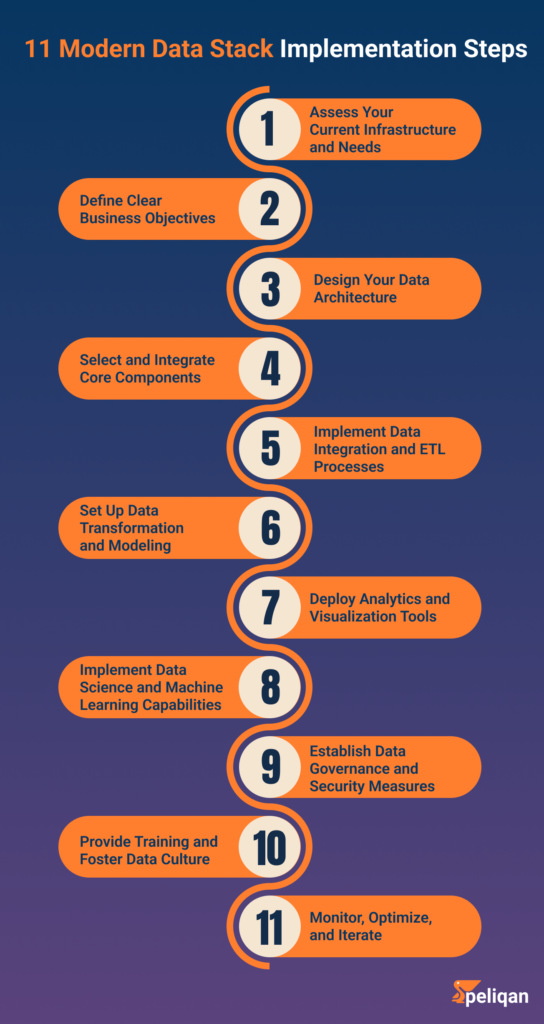
1. Assess Your Current Infrastructure and Needs
Before diving into implementation, it’s crucial to understand your current data landscape and future requirements.
Key Actions:
- Conduct a thorough audit of existing data systems, processes, and tools
- Identify pain points and bottlenecks in your current data workflow
- Survey stakeholders across departments to understand their data needs and challenges
- Evaluate your organization’s data maturity level
Peliqan Advantage: Peliqan’s all-in-one platform allows for easy integration with existing systems, making it simpler to assess your current setup and identify areas for improvement.
2. Define Clear Business Objectives
Align your data stack implementation with overarching business goals to ensure maximum value.
Key Actions:
- Collaborate with leadership to identify key business objectives that can be supported by improved data capabilities
- Prioritize use cases based on potential business impact and feasibility
- Set measurable KPIs for your data stack implementation
Peliqan Advantage: Peliqan’s versatility supports a wide range of business objectives, from improving operational efficiency to enabling advanced analytics and AI-driven insights.
3. Design Your Data Architecture
Plan the overall structure of your modern data stack, considering scalability, flexibility, and future needs.
Key Actions:
- Choose between a centralized data warehouse or a more distributed data mesh approach
- Decide on cloud vs. on-premises infrastructure (or a hybrid approach)
- Plan for data governance, security, and compliance requirements
Peliqan Advantage: Peliqan offers a built-in data warehouse while also supporting integration with popular cloud data warehouses like Snowflake and BigQuery, providing flexibility in your architecture design.
4. Select and Integrate Core Components
Choose the tools and technologies that will form the backbone of your modern data stack.
Key Actions:
- Evaluate and select tools for data integration, storage, transformation, and analytics
- Consider factors such as ease of use, scalability, community support, and total cost of ownership
- Plan for seamless integration between different components
Peliqan Advantage: As an all-in-one platform, Peliqan simplifies tool selection by providing integrated solutions for ETL, data warehousing, transformation, and analytics, reducing the complexity of managing multiple tools.
5. Implement Data Integration and ETL Processes
Set up robust data pipelines to bring data from various sources into your central repository.
Key Actions:
- Identify and prioritize data sources for integration
- Design and implement ETL/ELT processes
- Establish data quality checks and validation procedures
Peliqan Advantage: Peliqan offers one-click ETL from over 200+ SaaS applications, files, and databases, automating much of the data integration process and reducing the need for custom coding.
6. Set Up Data Transformation and Modeling
Prepare your data for analysis by implementing transformation logic and creating data models.
Key Actions:
- Develop a data modeling strategy (e.g., dimensional modeling, data vault)
- Implement data cleaning and standardization processes
- Create reusable transformation logic for common data preparation tasks
Peliqan Advantage: Peliqan provides multiple ways to transform data, including SQL models, a spreadsheet-like interface, and low-code Python scripts, catering to users of various technical levels.
7. Deploy Analytics and Visualization Tools
Enable data exploration and insight generation across your organization.
Key Actions:
- Select and implement business intelligence and data visualization tools
- Create initial dashboards and reports for key business metrics
- Set up self-service analytics capabilities for business users
Peliqan Advantage: Peliqan integrates with popular BI tools and offers a built-in spreadsheet BI interface. It also provides one-click deployment of tools like Metabase and Apache Superset for advanced analytics capabilities.
8. Implement Data Science and Machine Learning Capabilities
If applicable, set up infrastructure for advanced analytics and AI/ML workloads.
Key Actions:
- Establish a data science environment with necessary tools and libraries
- Implement version control and reproducibility for data science projects
- Develop processes for model training, deployment, and monitoring
Peliqan Advantage: Peliqan supports data science workflows through its low-code Python scripting environment and one-click deployment of Jupyter notebooks, making it easier to incorporate advanced analytics into your data stack.
9. Establish Data Governance and Security Measures
Ensure data quality, security, and compliance throughout your modern data stack.
Key Actions:
- Implement data cataloging and metadata management
- Set up access controls and data masking for sensitive information
- Establish data lineage tracking and impact analysis capabilities
- Develop policies and procedures for data usage and sharing
Peliqan Advantage: Peliqan provides built-in data lineage and data catalog features, automatically detecting table and column lineage across the entire data stack, enhancing governance and transparency.
10. Provide Training and Foster Data Culture
Ensure widespread adoption and effective use of your modern data stack.
Key Actions:
- Develop training programs for different user groups (e.g., analysts, business users, data scientists)
- Create documentation and knowledge bases for self-service learning
- Establish a center of excellence or data champions program to promote best practices
- Encourage a data-driven culture through leadership support and incentives
Peliqan Advantage: Peliqan’s user-friendly interfaces and low-code options make it easier for users of various skill levels to engage with data, supporting a broader data culture within the organization.
11. Monitor, Optimize, and Iterate
Continuously improve your modern data stack based on usage patterns and evolving needs.
Key Actions:
- Implement monitoring for performance, usage, and costs
- Regularly review and optimize data models and pipelines
- Stay updated on new technologies and best practices in the data space
- Gather feedback from users and iterate on your data stack implementation
Peliqan Advantage: Peliqan’s modular design and regular updates allow for easy optimization and iteration of your data stack as your needs evolve.
By following these steps and leveraging the capabilities of a comprehensive platform like Peliqan, organizations can successfully implement a modern data stack that drives innovation, improves decision-making, and creates lasting business value. Remember that implementation is an ongoing process, and the key to success is remaining flexible and responsive to the changing needs of your organization and the evolving data landscape.
Modern Data Stack Use Cases
The versatility of modern data stack solutions like Peliqan enables a wide range of use cases across various industries and business functions. Let’s explore some key use cases in more detail:
1. SaaS Data Cockpit
Challenge: Organizations often use multiple SaaS applications, leading to data silos and difficulty in gaining a holistic view of business operations.
Solution: Peliqan allows instant access, combination, and reporting on data from all your SaaS applications. This centralized approach enables:
- Unified dashboards combining data from various sources (e.g., Salesforce, Zendesk, HubSpot)
- Cross-functional analytics for better decision-making
- Real-time insights into business performance across multiple dimensions
Example: A sales team can correlate CRM data with customer support tickets and marketing campaign performance to identify high-value customers and optimize sales process.
2. Developer Platform
Challenge: Implementing complex data use cases often requires extensive coding and multiple tools, slowing down development and increasing technical debt. Partnering with experts who provide saas ai development services can help streamline the process and reduce overhead.
Solution: Peliqan’s low-code Python environment empowers developers to:
- Implement reverse ETL processes for data writeback to source systems
- Create custom data processing workflows
- Develop and deploy machine learning models within the same platform
Example: A developer can create a customer churn prediction model using historical data from the data warehouse, then set up an automated workflow to score new customers and push results back to the CRM system.
3. White-label Data Warehouse
Challenge: Software companies, integrators, and consultants need to provide robust data solutions to their clients without building everything from scratch.
Solution: Peliqan offers a white-label all-in-one data platform that can be branded and customized, enabling:
- Rapid deployment of client-specific data warehouses
- Customized ETL processes for each client’s unique data sources
- Branded dashboards and reporting interfaces
Example: A software company can offer its clients a branded data analytics platform, allowing them to explore their data using familiar interfaces while maintaining control over data processes and security.
4. Marketing and Revenue Analytics
Challenge: Marketing agencies struggle to consolidate data from multiple channels and tie it to revenue outcomes.
Solution: Peliqan enables agencies to:
- Analyze revenue and spend data across all marketing channels
- Implement RevOps solutions for data-driven decision making
- Create custom attribution models to understand marketing effectiveness
Example: An agency can build a comprehensive dashboard that shows ROI for each marketing channel, customer acquisition costs, and lifetime value predictions, helping clients optimize their marketing budgets.
5. Accounting and Financial Analysis
Challenge: Accounting firms often rely on static exports and manual data manipulation, leading to inefficiencies and potential errors.
Solution: Peliqan replaces one-time exports with a real-time interactive data layer, allowing firms to:
- Automate data consolidation from multiple financial systems
- Perform real-time financial analysis and forecasting
- Create dynamic reports that update automatically as new data comes in
Example: An accounting firm can set up automated workflows to consolidate client financial data, perform reconciliations, and generate custom financial reports, significantly reducing manual work and improving accuracy.
6. Consulting Data Platform
Challenge: Consultants need to quickly analyze client data from various sources to provide actionable insights.
Solution: Peliqan empowers consultants with a comprehensive tool to:
- Handle customer data at scale from diverse sources
- Perform advanced analysis using SQL and Python within a single platform
- Prepare custom reports and interactive dashboards for clients
Example: A management consulting firm can use Peliqan to integrate client data from ERP, CRM, and HR software, perform workforce productivity analysis, and create interactive scenario planning tools for their clients.
7. Data Activation and Personalization
Challenge: Organizations struggle to operationalize their data insights and deliver personalized experiences at scale.
Solution: Peliqan’s data activation capabilities enable:
- Reverse ETL to sync insights back to operational systems
- Creation of personalized customer journeys based on data-driven segments
- Automated alerting and reporting based on data triggers
Example: An e-commerce company can use Peliqan to segment customers based on purchase history and browsing behavior, then automatically sync these segments to their email marketing platform for personalized campaigns.
8. Data Marketplace and Sharing
Challenge: Organizations need secure ways to share data with partners, customers, or internal teams while maintaining control and compliance.
Solution: Peliqan allows companies to:
- Create data APIs for secure external data sharing
- Set up internal data marketplaces for cross-departmental data access
- Implement fine-grained access controls and data governance policies
Example: A retailer can create a secure data-sharing portal for suppliers, providing real-time inventory and sales data through APIs, improving supply chain efficiency and transparency.
By leveraging a comprehensive platform like Peliqan, organizations can address a wide range of data challenges and unlock new opportunities across various business functions. The flexibility and scalability of the modern data stack make it adaptable to diverse use cases, driving innovation and competitive advantage.
Conclusion
The modern data stack represents a powerful approach to harnessing the full potential of an organization’s data assets. By leveraging cloud-native, modular, and scalable technologies, businesses can transform raw data into actionable insights more efficiently than ever before.
Peliqan offers a unique solution in this landscape by providing an all-in-one platform that addresses the key components of the modern data stack. Its combination of automated ETL, built-in data warehouse, flexible transformation options, and integrated BI capabilities makes it an attractive option for businesses looking to implement a modern data stack without the complexity of managing multiple disparate tools.
Whether you’re just beginning your data journey or looking to optimize an existing data infrastructure, platforms like Peliqan can help streamline the process of building and maintaining a modern data stack. By providing a comprehensive set of tools in a unified environment, Peliqan enables organizations of all sizes to become truly data-driven, unlocking the full potential of their information assets and driving innovation in an increasingly competitive landscape.




